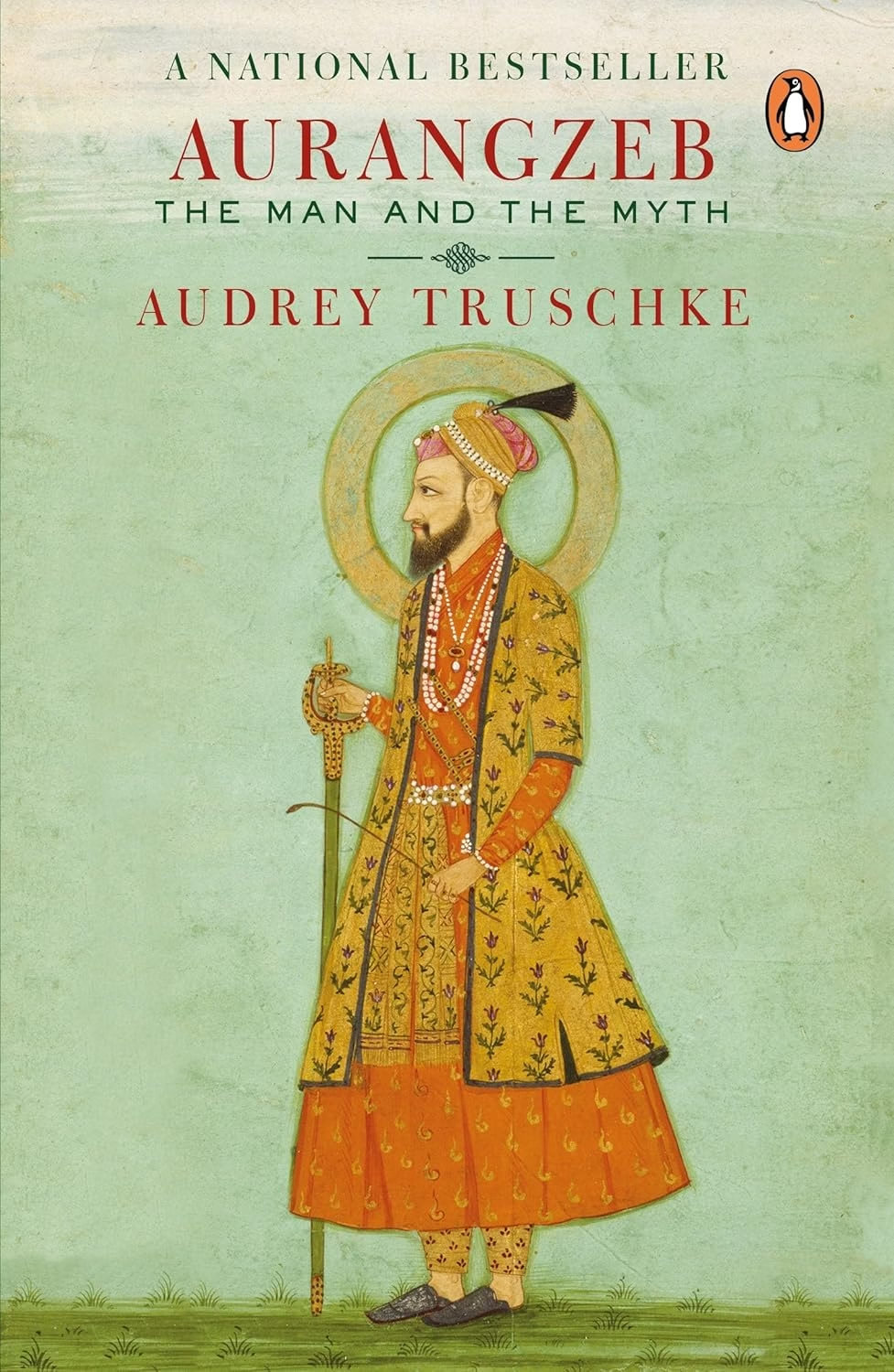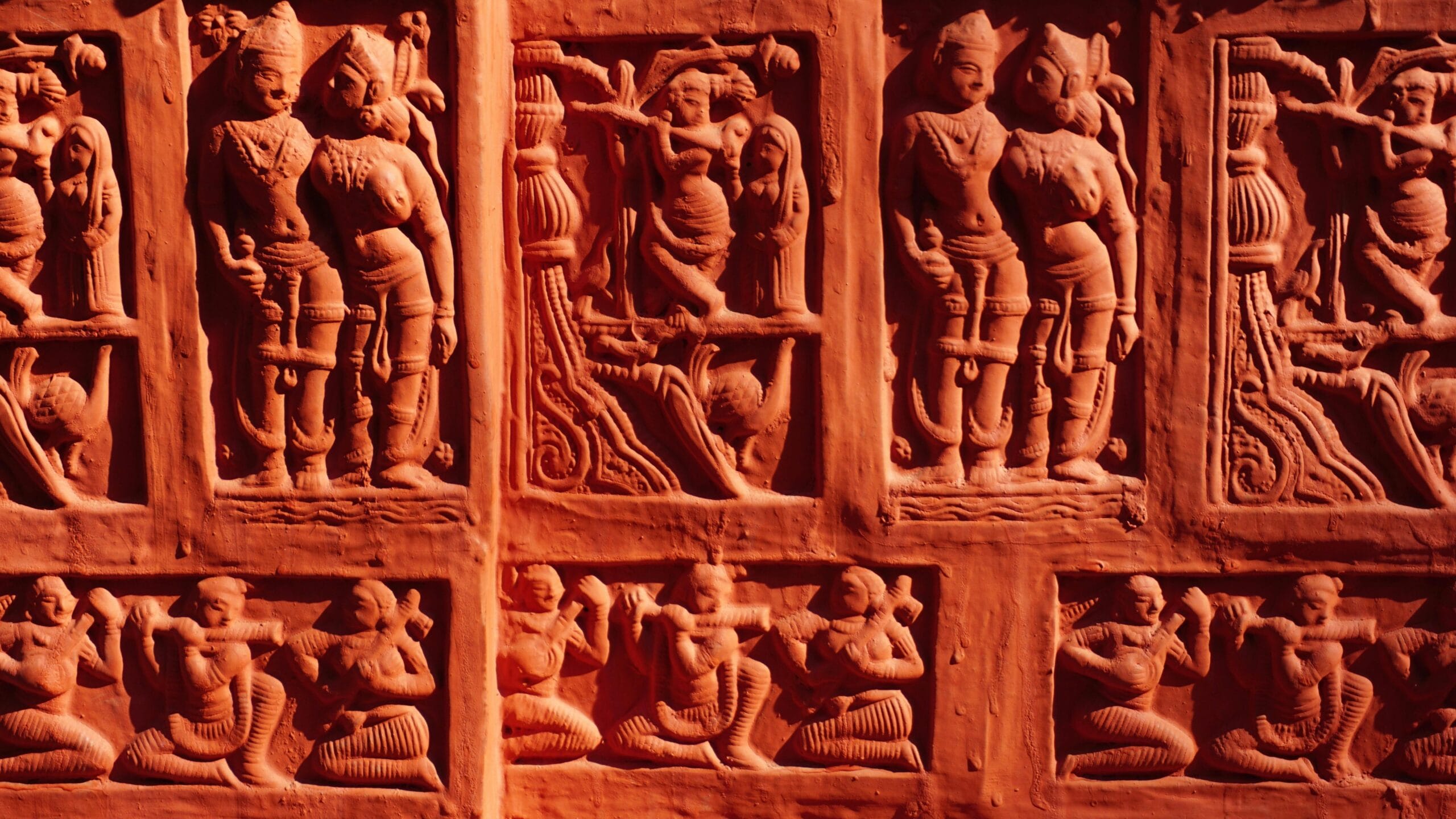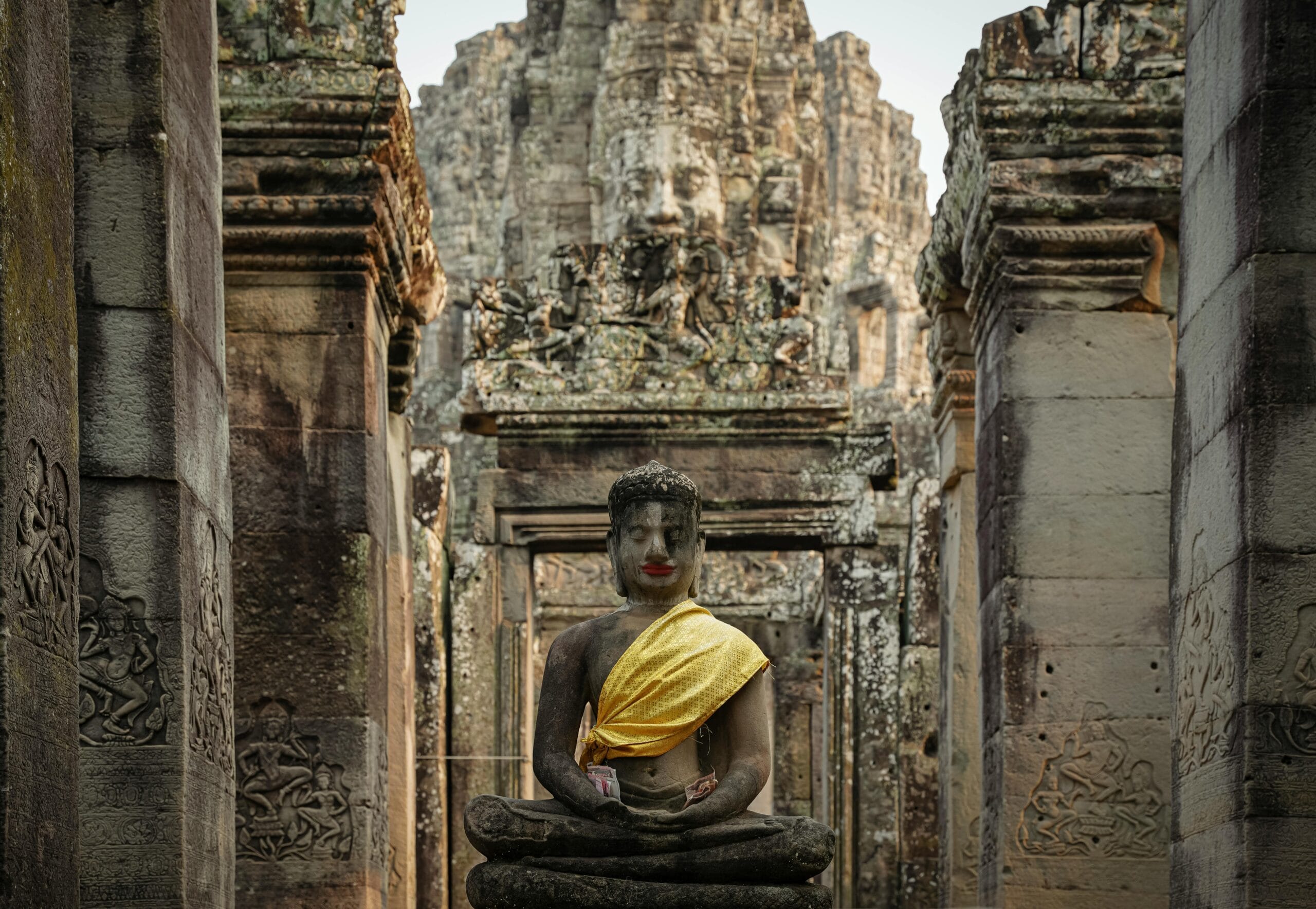Aurangzeb: Unveiling the Truth of India’s Vilified Emperor
Aurangzeb, a name synonymous with controversy and often reviled in India, remains one of the most debated figures in Indian history. Was he truly the tyrannical bigot that history paints him to be, or is there more to the story of the reign and legacy of Aurangzeb?
This article delves into the multifaceted aspects of the reign of Aurangzeb, examining historical evidence and scholarly analysis to uncover a more nuanced understanding of this complex figure. We aim to explore the historical context, analyse his policies, and dissect the narratives that have shaped his controversial legacy by taking references from the book Aurangzeb : The man and the Myth by Audrey Truschke.
Understanding Aurangzeb is like piecing together a shattered vase – each fragment tells a story, but only by examining them together can we see the whole picture.
Table of Contents:
- Understanding the Historical Context of Reign and Legacy of Aurangzeb
- Policies of Aurangzeb: A Closer Look at His Reign and Legacy
- Temple Destruction During the Reign of Aurangzeb: Unveiling the Reasons
- Personal Beliefs of Aurangzeb: Examining His Letters and Reign
- The Role of Historical Narratives in Shaping the Image and Legacy of Aurangzeb
- Disclaimer:
- What You Can Do to Understand Aurangzeb's Reign and Legacy?
Understanding the Historical Context of Reign and Legacy of Aurangzeb
The Mughal Empire in the 17th Century
To understand Aurangzeb, we must first understand the Mughal Empire he inherited. By the 17th century, the empire was vast and diverse, encompassing a multitude of religions, cultures, and ethnicities. This inherent diversity presented significant challenges for any ruler, requiring a delicate balance of power and diplomacy.
Rise to Power of Aurangzeb: A Family Affair
Aurangzeb’s ascension to the throne was far from peaceful. He engaged in a bitter war of succession against his brothers, a common occurrence in Mughal history. This power struggle, while brutal, was not unique to Aurangzeb. As one historical account indicates, his father, Shah Jahan, also secured his rule by eliminating rivals within the family. This pattern of fratricide was prevalent throughout the Mughal dynasty.
The book references a saying from the Mughal Empire, specifically a Persian proverb, which highlights the cutthroat nature of familial power struggles and succession within the Mughal dynasty.

Challenges and Rebellions During the Reign of Aurangzeb
Aurangzeb faced numerous rebellions throughout his reign, from the Marathas in the south to the Rajputs in the north. These uprisings tested the empire’s resources and leadership of Aurangzeb, forcing him to make difficult decisions that often had far-reaching consequences. Consequently, his policies were often shaped by the need to maintain control and suppress dissent.
Policies of Aurangzeb: A Closer Look at His Reign and Legacy
Religious Policies: Beyond the Stereotypes
Aurangzeb is often portrayed as a religious fanatic who persecuted Hindus and destroyed temples. While it is true that he implemented certain policies that affected Hindus, a closer examination reveals a more complex picture. According to historian Catherine Asher, Aurangzeb also provided patronage to Hindu temples and granted land to Hindu religious figures.

The Jizya Tax: Context and Controversy
The reimposition of the Jizya tax on non-Muslims is one of the most controversial aspects of the reign of Aurangzeb. However, it’s important to understand the historical context. The Jizya was not simply a tool of religious persecution but also a way to generate revenue for the state. According to historical records, exemptions were made for certain individuals and groups, including Brahmins.

Land Grants and Patronage: Supporting Hindu Institutions
Contrary to popular belief, Aurangzeb also provided land grants and patronage to Hindu temples and religious figures. Historical documents reveal that he issued decrees protecting Hindu temples and granted land to Brahmins and other Hindu religious leaders. For instance, he issued a farman to the Umananda Temple in Assam, confirming its land grants and rights. These acts of patronage challenge the simplistic narrative of Aurangzeb as a purely anti-Hindu ruler.

Temple Destruction During the Reign of Aurangzeb: Unveiling the Reasons
Political Motivations: Suppressing Rebellion
While Aurangzeb did order the destruction of some temples, it is crucial to understand the political motivations behind these actions. According to the book, in many cases, temples were destroyed because they were associated with rebellious groups or individuals. For example, the destruction of the Vishwanath Temple in Banaras was linked to the rebellion of local zamindars who had aided Shivaji’s escape from Mughal custody.

Punishing Disloyalty: Temples as Symbols of Authority
Temples were often seen as symbols of authority and power. By destroying temples associated with rebellion, Aurangzeb aimed to suppress dissent and reassert Mughal authority. Was this purely religious zealotry, or a calculated act of political dominance? What would you do if you were at his place? This was not necessarily an act of religious persecution but rather a political strategy to maintain control over his vast empire.

Historical Precedents: Targeting Religious Structures
It’s also important to note that the destruction of religious structures was not uncommon in pre-modern India. Hindu rulers also targeted temples associated with rival kingdoms or rebellious groups. This practice highlights the complex relationship between religion and politics in the pre-modern era.
Referencing the “Brahad Sanhita”, an ancient text, the article explains the belief that damage to idols or temples portended the destruction of the kingdom, which was one reason for temple destruction in the past. However, historical records reveal that he issued decrees protecting Hindu temples and granted land to Brahmins and other Hindu religious leaders.

Personal Beliefs of Aurangzeb: Examining His Letters and Reign
Letters to His Sons and Relatives: Insights into His Mind
Aurangzeb’s personal letters provide valuable insights into his beliefs and motivations. These letters reveal a man grappling with the challenges of leadership, expressing concerns about the future of the empire, and reflecting on his own mortality.
They also show his human side. For example, in his final days, Aurangzeb expressed anxiety about the future of his empire and the suffering that his descendants might face. These letters humanize Aurangzeb and offer a glimpse into his inner world.
Regret and Fear: A Ruler’s Inner Turmoil
In his letters, Aurangzeb often expressed regret for the violence and bloodshed that marked his reign. He also expressed fear about the consequences of his actions and the judgment of God. These expressions of regret and fear suggest that Aurangzeb was not simply a ruthless tyrant but a complex individual grappling with the moral implications of his decisions.

The Influence of Sufism: A Spiritual Dimension
Aurangzeb was also influenced by Sufism, a mystical branch of Islam that emphasizes love, compassion, and tolerance. This Sufi influence can be seen in his emphasis on justice, his concern for the welfare of his subjects, and his efforts to promote religious harmony. However, this aspect of his personality is often overlooked in popular narratives.
The Role of Historical Narratives in Shaping the Image and Legacy of Aurangzeb
Colonial Interpretations: Fostering Division
Colonial historians often portrayed Aurangzeb as a religious fanatic in order to justify British rule and promote the idea of a divided India. By emphasising the conflict between Hindus and Muslims, colonial historians sought to create a narrative that legitimised British rule as a force for stability and order.
Communal Politics: Amplifying Negative Portrayals
In post-independence India, communal politics have further amplified negative portrayals of Aurangzeb. Certain political groups have used his image to demonise Muslims and promote a divisive agenda. This has led to a distorted and one-sided understanding of Aurangzeb’s reign.
The Need for Nuance: Moving Beyond Stereotypes
It is essential to move beyond simplistic stereotypes and engage with a more nuanced understanding of Aurangzeb’s reign. This requires examining historical evidence from multiple perspectives, challenging biased interpretations, and acknowledging the complexities of the past. Jawaharlal Nehru, in his “Discovery of India”, points out how Nehru, once revered, is now blamed by some for India’s problems, illustrating the shifting narratives and the inclination to find a scapegoat for societal issues.
Disclaimer:
For clarity, here are the definitions and explanations of key terms used in this article:
- Samrat Parampara: Indian civilisation heritage, referring to the tradition of emperors and their legacies in Indian history.
- Brahmanikaran: Brahmanikaran means adopting the Brahmanical practices, rituals, and ideology. This process influenced socio-political structures, often leading to the dominance of Brahmanical traditions. Understanding Brahmanikaran helps to contextualise the religious and social dynamics of Aurangzeb’s time.
- Farman: A royal decree or order issued by a Mughal emperor.
- Jizya: A poll tax historically levied in Islamic states on non-Muslim subjects.
What You Can Do to Understand Aurangzeb’s Reign and Legacy?
- Engage with Diverse Sources: Seek out diverse historical accounts and scholarly analyses to form your own informed opinion about Aurangzeb.
- Challenge Biased Narratives: Question simplistic stereotypes and biased interpretations of history.
- Promote Critical Thinking: Encourage critical thinking and open dialogue about controversial historical figures like Aurangzeb.
By embracing a more nuanced and critical approach to history, we can move beyond simplistic stereotypes and gain a deeper understanding of the complexities of the past. This, in turn, can help us build a more inclusive and tolerant future.
You can read the book for free here.
You can also order the hardcopy if you are interested.

Aurangzeb Alamgir (r. 1658-1707), the sixth Mughal emperor, is widely reviled in India today. Hindu hater, murderer and religious zealot are just a handful of the modern caricatures of this maligned ruler. While many continue to accept the storyline peddled by colonial-era thinkers-that Aurangzeb, a Muslim, was a Hindu-loathing bigot-there is an untold side to him as a man who strove to be a just, worthy Indian king. in this bold and captivating biography, Audrey Truschke enters the public debate with a fresh look at the controversial Mughal emperor.
Read more about Chhava and his history.
Do you disagree with this article? If you have strong evidence to back up your claims, we invite you to join our live debates every Sunday, Tuesday, and Thursday on YouTube. Let’s engage in a respectful, evidence-based discussion to uncover the truth. Watch the latest debate on this topic below and share your perspective!


[…] Read more about the True History of Aurangzeb!! […]